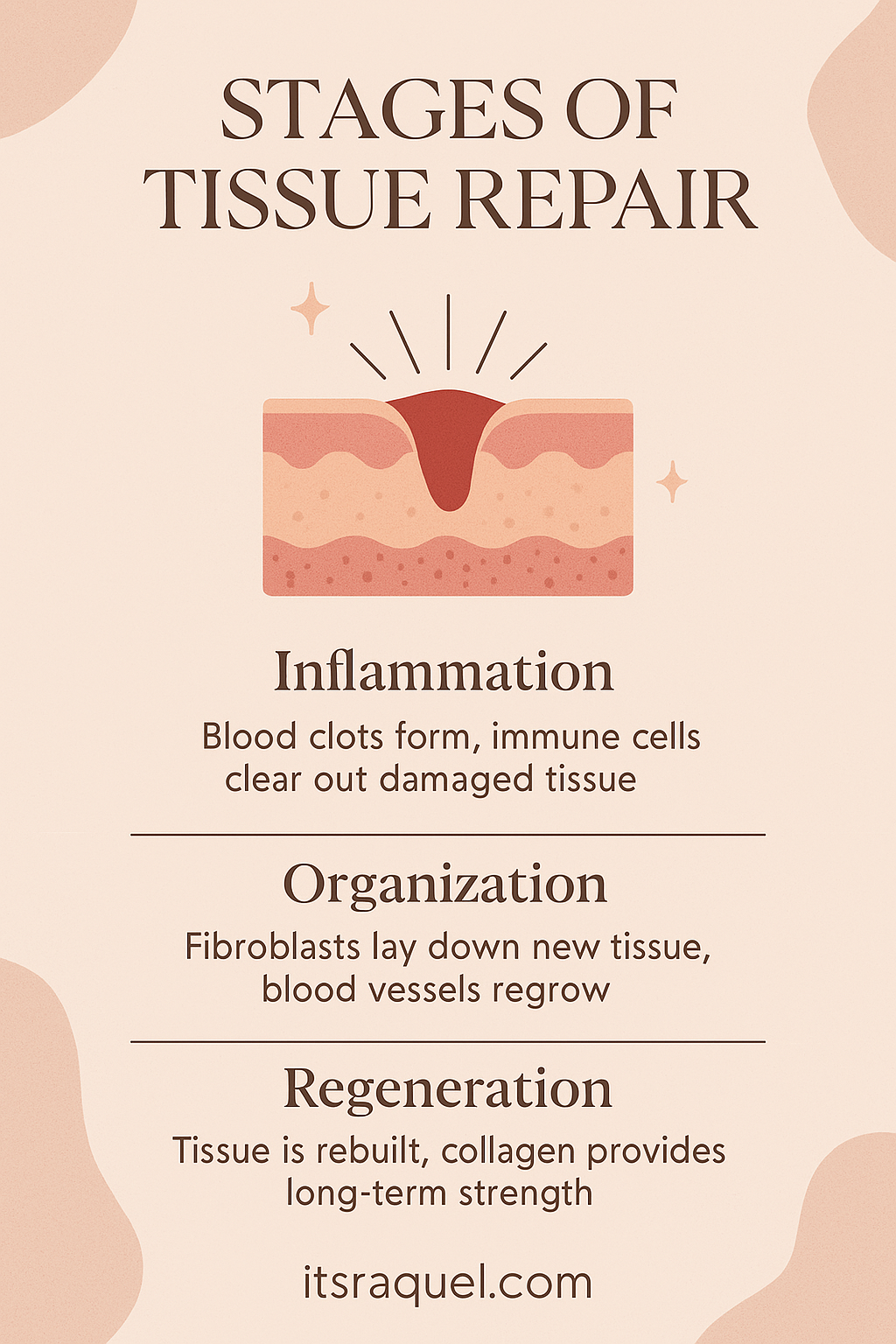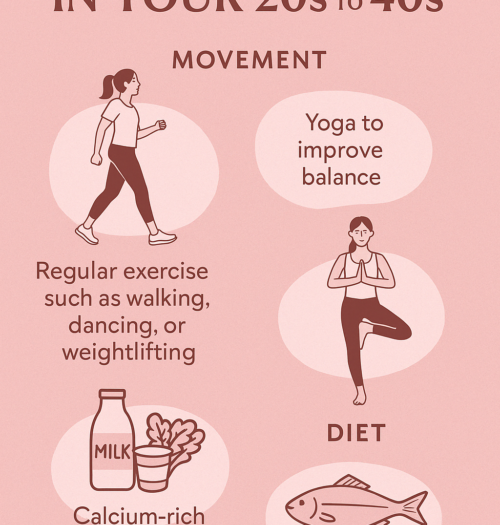
How the Body Repairs Itself—and When It Doesn’t Go as Planned
Tissue repair is the body’s built-in renovation system. Whether from a scrape, surgery, or something more internal, our bodies work hard to patch things up. This healing process happens in three major stages: inflammation, organization, and regeneration.
1. Inflammation: The Immediate Response
The moment tissue is injured, the inflammation phase kicks in. If there’s bleeding, your body forms a clot and a protective scab. This isn’t just a surface-level fix—the scab is a signal that healing is beginning beneath the skin. Immune cells rush in to clear out damaged tissue and any unwanted invaders like bacteria. You’ll usually notice swelling, redness, heat, or tenderness during this stage. It’s not fun, but it means your body is doing its job.
2. Organization: Laying the Groundwork
A few days to a few weeks after injury, the organization phase begins. Think of this as the scaffolding stage—fibroblasts come in to lay down new tissue, and blood vessels regrow to deliver nutrients and oxygen. That old clot from the inflammation phase? It’s replaced with granulation tissue, which acts like a biological band-aid. Swelling begins to fade as your body continues its behind-the-scenes repair work.
3. Regeneration: The Long Game
Regeneration is the final phase—and it’s a marathon, not a sprint. This phase can take weeks, months, or even years depending on the severity of the injury. The tissue is gradually rebuilt, and collagen fibers are reorganized to provide strength. In ideal situations, the tissue returns to its normal function. But when the damage is extensive or healing is disrupted, scar tissue forms—and that’s where problems can arise.
When Healing Goes Wrong: Russell Westbrook and Arthrofibrosis
A powerful example of tissue repair gone wrong is seen in NBA star Russell Westbrook. Throughout his career, Westbrook has had multiple knee surgeries, including meniscus repairs. While these procedures were medically necessary, they increased his risk for arthrofibrosis—a condition where excessive scar tissue develops inside a joint.
This buildup of scar tissue limits movement, causes stiffness, and results in chronic pain. For someone like Westbrook—known for explosive power, quick cuts, and high-impact plays—it’s a game-changer. Stiff knees reduce his agility, making it harder to perform at the elite level fans are used to.
But the effects don’t stop on the court. Arthrofibrosis can affect everyday activities, too. Imagine being in constant pain while climbing stairs, walking long distances, or just playing with your kids. For Westbrook and many others, the emotional toll of physical limitation is just as tough as the physical one.
Why This Matters
Tissue repair is usually efficient, but it’s not perfect. When the balance is off—whether due to genetics, repeated surgeries, or the body’s overreaction—fibrosis or poor healing can alter everything from athletic performance to quality of life.
By understanding the phases of healing and the risks of complications like arthrofibrosis, we can better appreciate the complexity of the human body—and the importance of giving it the time, care, and rest it needs to heal properly.
References:
Lee, D. R., Therrien, E., Song, B. M., Camp, C. L., Krych, A. J., Stuart, M. J., Abdel, M. P., & Levy, B. A. (2022). Arthrofibrosis Nightmares: Prevention and Management Strategies. Sports medicine and arthroscopy review, 30(1), 29–41. https://doi.org/10.1097/JSA.0000000000000324
Winfield, K. (2018, September 12). A history of Russell Westbrook’s many knee surgeries. SBNation.com. https://www.sbnation.com/2018/9/12/17851948/russell-westbrook-knee-injury-surgery-history-thunder
Raquel Schroeder
Hey, I’m Raquel—nursing student, flight attendant, mama, and glow-getter.
You May Also Like

How Muscle Contraction Works (and How Botox Shuts It Down)

